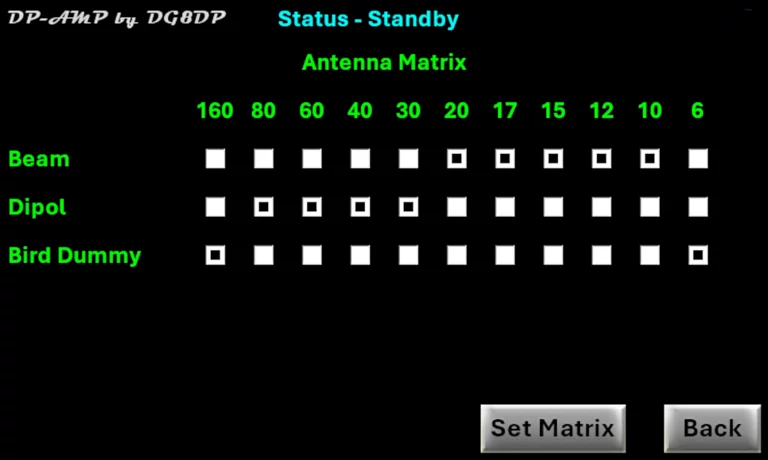Software
DP-AMP Sixty One Display / GUI
A lot has changed in terms of displays since the HVF-1k2.
Whereas previously it was an HDMI touchscreen display connected
to a Raspberry PI, today there are much more modern displays
available that even come with a small computer.
These displays are known as HMI (Human Machine Interface)
displays.
HMI displays can receive and send data and display this data on
the screen. With the right displays, even demanding projects
can be implemented.
The new HMI display is connected directly to the DP-AMP Sixty
One controller.
No more Raspberry PI, no more booting, no more system
maintenance of the operating system necessary.
Switch it on and get started right away!
The GUI has been completely redesigned and many new features
have been added.
Once again, greetings to companies, self-proclaimed experts,
and copycats!
The goal was to bring as much relevant data as possible to the main screen without losing clarity. We also thought of the technicians who prefer to see dB. The usability should be as simple as possible, even with all the new possibilities.
Highlights:
- The antenna matrix always switches to the appropriate antenna for the selected frequency range.
- Simultaneous antenna tuner: even during reception, the appropriate adjustment is continuously read from the database in the background and set.
- ATU database for all three antennas separately and two
weather conditions each.
Weather conditions are taken into account; you can choose between dry and wet if an antenna behaves differently in rain and snow than in dry weather. - The antenna tuner can automatically tune an entire band via CAT and write the data to the database.
- After switching on and with every band change, the VSWR is
measured at the lowest transceiver power (less than 1W). If the
VSWR is within the permitted range, the power is immediately
available. If the VSWR is exceeded, an entry is made in the
error log, an error message is displayed, and the 50V operating
voltage is deactivated.
You can't get any safer than that! - Separate adjustment of input power for all bands via CAT.
- VSWR scan across the set frequency range with graphical display.
- Adjustment of brightness and color schemes for the display.
- Calibration option for voltage, current, and power.
- Status information.
- Automatic error log.




